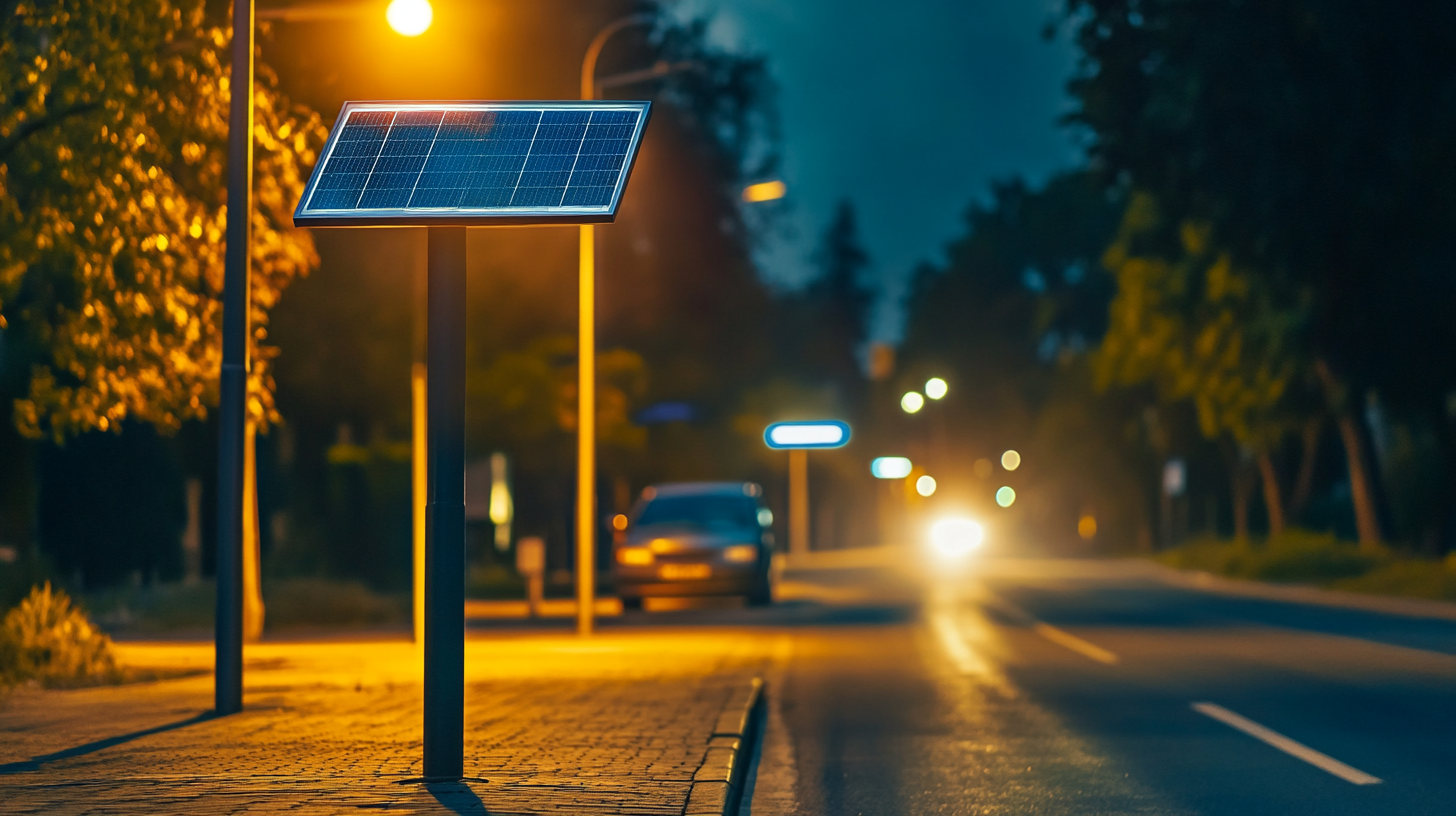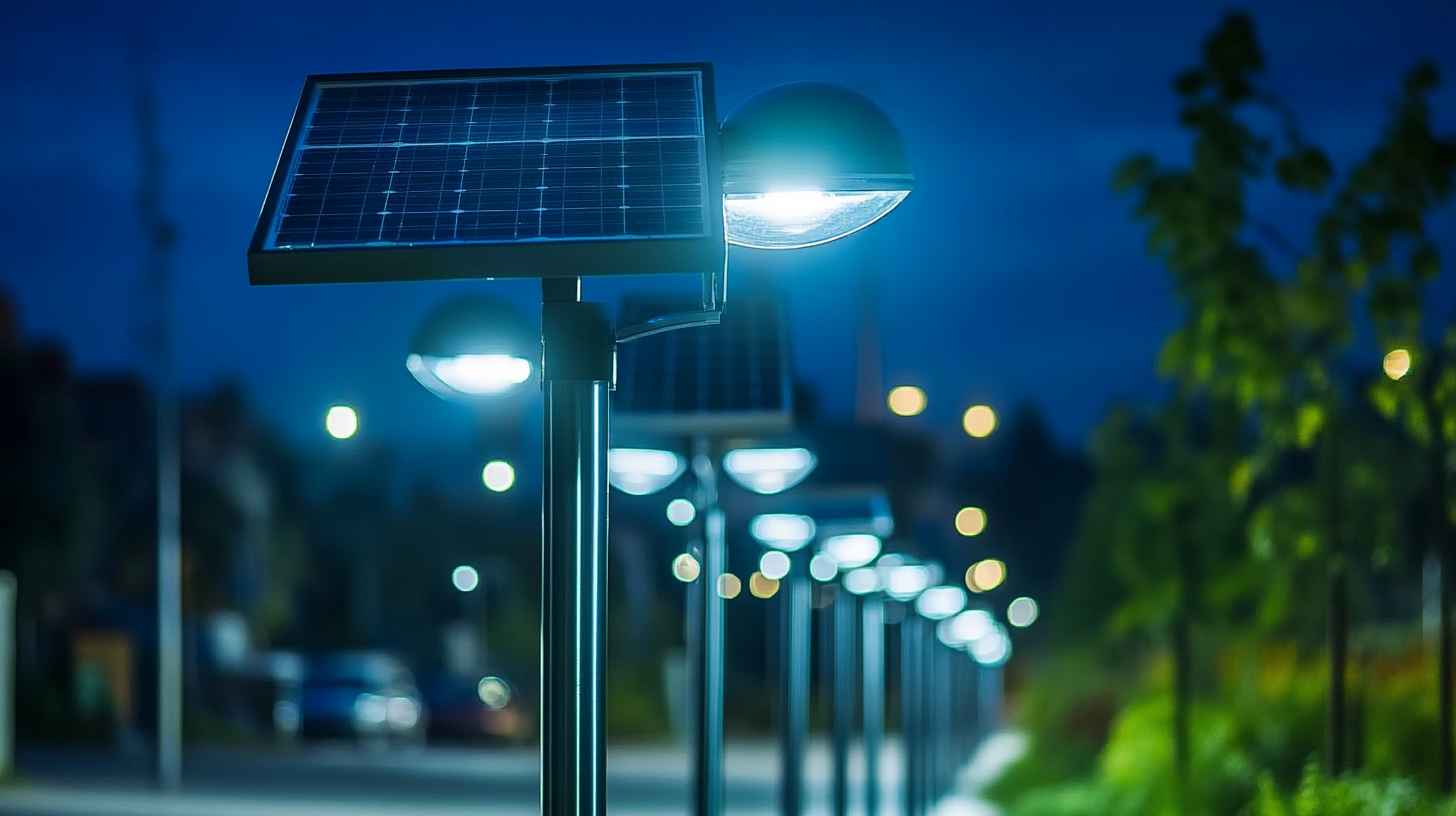News
Solutions for Innovative Best Solar Street Lights to Enhance Urban Safety
In today's rapidly evolving urban landscapes, ensuring public safety is a primary concern for city planners and residents alike. One innovative solution that has emerged is the implementation of Solar Street Lights, which not only provide essential illumination but also contribute to sustainable energy practices. As cities seek to enhance safety, reduce energy costs, and minimize their carbon footprint, the adoption of Solar Street Lights becomes increasingly relevant. This blog will offer a comprehensive checklist highlighting the key features and benefits of modern solar street lighting systems, guiding municipalities and organizations in making informed decisions. By examining innovative designs, technology integrations, and maintenance considerations, we aim to showcase how Solar Street Lights can transform urban environments into safer and more sustainable spaces for all.

Innovative Technologies Shaping Solar Street Lights for 2025
As cities evolve, so do the technologies that enhance urban safety and sustainability. In 2025, we can expect solar street lights to undergo significant advancements, driven by innovative technologies that promise to transform our urban landscapes. One of the key features will be integrated smart sensors that can monitor and analyze real-time data, adapting the light intensity based on pedestrian and vehicular traffic. This not only conserves energy but also ensures optimal visibility during crucial hours, thereby enhancing safety for residents.
Additionally, connectivity is set to play a crucial role in the future of solar street lights. With the integration of IoT (Internet of Things) capabilities, these lights will communicate with each other and with smart city infrastructure. This interconnectedness allows for seamless communication, enabling functionalities such as remote monitoring and maintenance, and providing crucial data that can be used to further improve urban planning and safety measures. Furthermore, the use of advanced materials will lead to more resilient and efficient solar panels, ensuring that street lights remain operational even in adverse weather conditions. These innovations not only promise to enhance urban safety but also contribute to the overall sustainability goals of modern cities.
Key Features of the Best Solar Street Lights for Urban Safety
When it comes to enhancing urban safety, solar street lights stand out as an innovative solution, combining efficiency with ecological benefits. The best solar street lights are equipped with features that ensure maximum visibility and safety for pedestrians and vehicles alike. Bright LED lights, for example, provide ample illumination without consuming excessive energy, making them not only effective but also sustainable over time. Additionally, adjustable brightness settings can adapt to varying environmental conditions, optimizing energy usage while still maintaining safety.
Another essential feature of top-quality solar street lights includes smart technology integration. Many models today come equipped with motion sensors that detect movement, increasing brightness when someone approaches and dimming when the area is clear. This not only conserves battery power but also enhances safety by providing focused lighting where needed. Furthermore, some systems are outfitted with built-in cameras and emergency response capabilities, allowing for real-time monitoring and improved response to incidents, significantly bolstering urban security.

Benefits of Implementing Solar Street Lighting in Smart Cities
Implementing solar street lighting in smart cities offers a multitude of benefits that significantly enhance urban safety and sustainability. According to a 2022 report by the International Renewable Energy Agency (IRENA), transitioning to solar street lights can lead to energy savings of up to 80% compared to traditional lighting systems. This energy efficiency reduces the overall operation costs for municipalities, allowing funds to be allocated towards other critical public safety initiatives.
Moreover, solar street lights contribute to improved visibility during night hours, which is crucial for enhancing public safety. A study by the National Institute of Justice revealed that enhanced street lighting can lead to a 20% reduction in crime rates. In smart cities where technology integration is paramount, solar street lights can be equipped with IoT sensors to monitor environmental conditions and detect potential safety hazards in real-time, providing proactive measures to address urban crime and accidents before they occur. This integration not only fosters safer urban environments but also reinforces the commitment to sustainable and intelligent urban planning.
Future Trends in Solar Street Light Designs and Energy Efficiency
As urban areas continue to evolve, the integration of solar street lights presents an innovative solution to enhance safety while promoting energy efficiency. Future trends in solar street light designs are increasingly focusing on smart technology, incorporating sensors and connectivity. This allows for adaptive lighting that adjusts according to pedestrian activity and environmental conditions, ensuring that streets are well-lit during busy hours while conserving energy during quieter times. Innovations such as integrated LED technology enhance both visibility and aesthetics, providing cities with the dual benefit of safety and style.
Furthermore, the commitment to sustainability drives advancements in energy efficiency for solar street lights. With the development of more efficient photovoltaic cells and energy storage systems, new designs promise longer operational hours and reduced maintenance costs. The incorporation of IoT (Internet of Things) technology not only facilitates real-time data analysis for better energy management but also empowers municipalities to monitor performance and predict maintenance needs proactively. As cities look toward greener futures, the evolution of solar street lights represents not just a solution for today’s urban challenges but a blueprint for the sustainable cities of tomorrow.

Guidelines for Selecting the Right Solar Street Lights for Your City
When selecting the right solar street lights for your city, it's essential to consider several critical factors. First, assess the specific lighting needs of your urban areas. Different zones, such as residential streets, commercial districts, and parks, may require varying levels of brightness and light distribution. A thorough analysis of foot and vehicle traffic patterns can help determine the optimal lumens needed to ensure public safety and visibility.
Another crucial aspect is the quality and durability of the solar street lights. Look for lights featuring high-grade materials that can withstand environmental factors such as rain, wind, and extreme temperatures. Additionally, energy efficiency is key; choose models that use advanced LED technology and come equipped with reliable solar panels to ensure consistent performance throughout the night.
Finally, don’t overlook the importance of smart technology integration. Many modern solar street lights come with features like motion sensors and remote monitoring, which can significantly enhance safety and reduce energy consumption. By prioritizing these guidelines, cities can effectively enhance urban safety while promoting sustainability through innovative solar lighting solutions.
